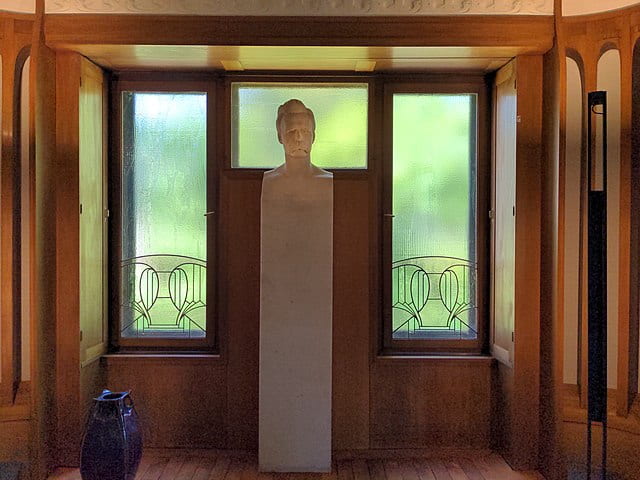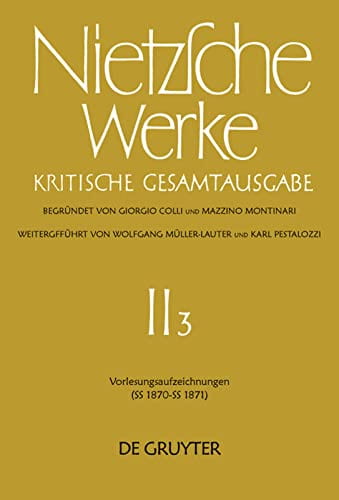By Isabel Jacobs
Philipp Felsch is Professor for Cultural History at Humboldt University of Berlin. He is interested in intellectual history and the history of science in the 19th and 20th centuries. His book The Summer of Theory. History of a Rebellion, 1960-1990 was published in 2021. An English edition of Wie Nietzsche aus der Kälte kam is forthcoming with Polity.
Isabel Jacobs is a primary editor at the JHIBlog. She spoke with Philipp Felsch about his latest book Wie Nietzsche aus der Kälte kam, which tells the story of two Italian anti-fascist philologists who, in the 1960s, discovered Friedrich Nietzsche’s manuscripts in GDR archives. Following the first part of their conversation, Part II focuses on Nietzsche’s revival in 1960s France.
***
Isabel Jacobs: Let’s talk about the French revival of Nietzsche which opens your book. One of the key events you recall is the Nietzsche congress in Royaumont in July 1964, which marked the emergence of both a “Nietzsche Renaissance” and French postmodernism. One of the issues a young Deleuze and Foucault discussed in Royaumont was how to read Nietzsche’s texts. Can you tell us a bit more about the French reception?
Philipp Felsch: Let me expand on that. We can basically say there are two major Nietzsche waves or fashions in the 20th century. There’s an early one, up to the 30s, which is mainly German, or German-inspired. One problem with Nietzsche has always been that he was not a classical or academic philosopher. Nietzsche had renounced his professorship of philology in early years. He was a Weltanschauung writer, so his status is very unclear. And you can see that many of the early interpretations of Nietzsche, also Heidegger’s, are concerned with legitimizing Nietzsche as a proper philosopher by projecting a systematic, central thought or idea of principle into Nietzsche’s vast body of writing: be it the eternal recurrence, or the will to power, or the superhuman.
In the 70s and 80s, there’s a second wave of Nietzsche revival that had its epicenter in France. There’s a long history of reading Nietzsche in France which goes back to the late 19th century. Nietzsche himself was a Francophile. He was anti-German in many ways, at least in later years. So he made it very easy for French readers to like him, even though they didn’t like Germany. Despite this long tradition, a “French Nietzsche” really only emerged in the 60s and the 70s. And this French Nietzsche was in many ways the opposite of the older Nietzsche. All previous attempts had tried to qualify Nietzsche as a proper philosopher with one central topic.

The new French philosophers, people like Deleuze, Foucault, Derrida, they do the opposite. They’re interested in Nietzsche because in their eyes he basically destroyed or exploded philosophical discourse from within. For them, Nietzsche’s work is, among other things, an event in the history of language. Along with the literary modernists, Nietzsche was the first to set free the sign as a material object on paper. Liberating the signifier also meant to free the “text” from a certain definite, fixed, or ultimate meaning. And of course the French post-structuralists were exactly interested in these things.
Now the Italian edition comes into play. It’s published in parallel in an Italian, German, and French version. The first volume of the French edition came out in 67 which is also a very significant year for post-structuralist theory. The novelty about this edition was that Colli and Montinari, for the first time, tried to decipher Nietzsche’s notebooks exactly as they were. Up to then, Nietzsche’s late, unpublished writings had mainly been read in the form of a book, The Will to Power, which his sister had edited. It’s a strongly edited book which tries to systematize a vast body of notes, scribbles, and jottings from his notebooks. Colli and Montinari, on the other hand, tried to merely transcribe these notes into printed letters. Half of their edition is just this collection of short fragments of texts: the unpublished writings of Nietzsche.
These notes moved into the center of a new Nietzsche cult. Because they show that Nietzsche was not a systematic philosopher, that he was not writing books in a classical form but that he was just producing a vast, autonomous body of text which had its own logic and followed its own laws. Nietzsche’s texts didn’t even have an author in the classical sense, because you have a chaotic mixture in these notebooks of philosophical aphorisms and excerpts from the stuff he was reading, but also everyday notations, like what to buy in the grocery store, things like that. And the French philosophers, namely Foucault, made a point out of that by saying that Nietzsche was not really an author in the way we traditionally perceived authorship. In Nietzsche’s case, the author is then rather an effect of posthumous editing.
How did the French philosophers know that? Of course because they had the Italian edition! Foucault was even a collaborator of Montinari and Colli; he was the guest editor of the French version of their edition, so he had access to these notebooks very early on. Today, the notebooks are all online, but back then nobody had ever seen them because they were in the archives in East Germany. Therefore, I argue in my book, the death of the author and many other of the post-structuralists’ core ideas emerged from the knowledge of and acquaintance with the unpublished writings of Nietzsche. That’s the legacy of the Italian edition.
At the same time, that’s really not what the Italian philologists intended. They were looking for Nietzsche’s original text without any posthumous distortions. Stemming from the same edition, on the one hand, you have this idea of ultimate textual truth, on the other, in French hands, it turns into the idea of free floating signifiers which are not connected to any definite meaning or truth. And that’s why the Italians felt mistreated, even betrayed by their French readers who were privileged by getting this very early access to this new material, but very openly denounced Colli and Montinari’s philological project as being ultra-traditional and belonging into the 19th century.
IJ: This leads me to my question why reading is so important for your story. The reader, it seemed to me, is the main protagonist of your book—as important as the author or even more. Intellectual history is told from a different point of view. This shift in perspective that you already employed in your last book is very productive. One of your inspirations is Michel Foucault’s genre of “reportage d’idées,” this whole idea of focusing on the places and events that give birth to new ideas. Can you expand a little on your approach?
PF: That’s exactly what I’m interested in. Of course there are many different angles if you try to do that but the basic idea is always the same. There’s a book by the German philosopher Hans Blumenberg called The Laughter of the Thracian Woman: A Protohistory of Theory which goes back to the early history of Greek philosophy. One of the Pre-socratic philosophers fell into a well because he was thinking so hard and didn’t watch where he was going. When his maid saw him, she had to laugh. Accordingly, in his book, Blumenberg was interested in philosophy as “exotic behavior” or, in other words, in the exterior, visible side of theory. In my book, and in the last one, I have also tried to describe theory insofar as you can see it.
I’m interested in the exterior, material, behavioral aspect of supposedly interior ideas and theories. That includes scriptures, books, journals, or paperbacks, the gestures, the whole behavior and comportment of philosophers. What does it even mean to be a philosopher or theorist? And of course, if you’re interested in the exterior, then also the “practice of theory,” as they called in the 60s, comes into focus, but not the practice of theory in the sense of changing the world through practicing theory.
It’s more about the question: what do we do when we do theory? One of the answers is: we read. Reading seems to be a focal point where theory becomes visible and turns into a lifestyle for postwar generations. That connects Colli and Montinari with the protagonists of my former book. When Montinari first saw one of Nietzsche’s handwritings in Weimar in 1961, he was completely allured. He devoted his whole life to a never-ending reading exercise.
IJ: Is there a new project that follows from the Nietzsche book?
PF: Not directly. What I’m doing now is co-organizing an international conference on the comparative history of close reading which arcs from literary studies all the way into philology and philosophy. The idea that you have to delve deeply into texts is something very significant in the twentieth-century history of ideas. Of course, it has a long history rooted in biblical philology. But it seems to be very typical of the last century. Besides, I am writing a short book on the German philosopher Jürgen Habermas, looking back at the decades of postwar German intellectual history that he represented like nobody else and that seems to finally come to an end.
***
Featured Image: Mazzino Montinari working at his desk. Credits: Aline Montinari.



